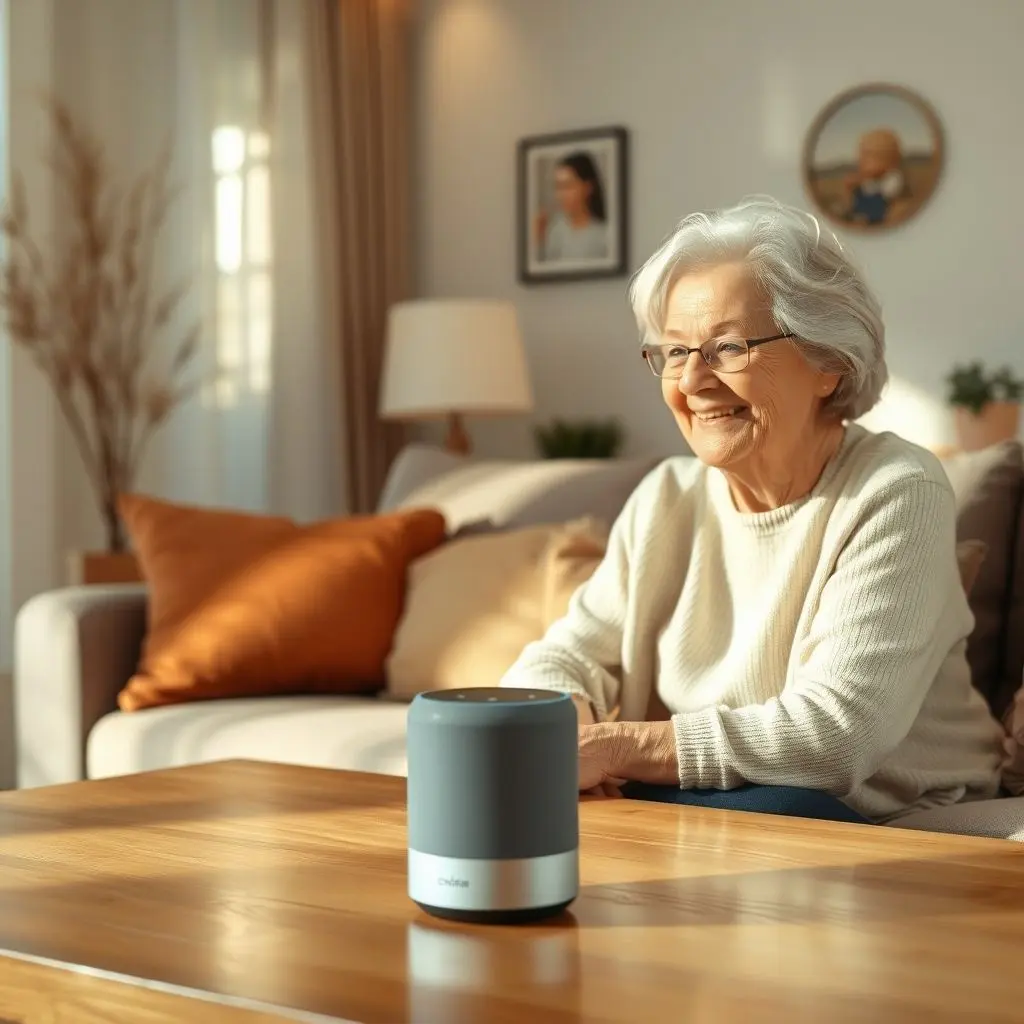As the years add up, many face a quiet adversary: loneliness. It’s a challenge that can impact well-being profoundly, often hidden but deeply felt. But what if technology could offer a helping hand, not just with tasks, but with companionship itself?
Imagine innovative solutions designed not just to process information, but to foster connection. This is where AI companions step in – a fascinating frontier where artificial intelligence is being leveraged to combat isolation among the elderly. These aren’t merely sophisticated gadgets; they are being developed as interactive presences aiming to provide conversation, offer gentle reminders, stimulate mental engagement, and even provide a sense of consistent comfort. The goal? To help bridge social gaps that can widen with age.
Think of them less as machines and more as digital buddies, theoretically available whenever needed to listen, share a digital story, or simply ‘be there.’ The promise is a reduction in feelings of solitude, contributing positively to overall mental and emotional health.
Before we dive deeper into the specifics, here’s a quick look at the concept of AI adding connection to later years:
Table of Contents
The Silent Struggle: Loneliness in the Elderly
Loneliness is more than just feeling alone occasionally; for seniors, it can be a persistent state linked to significant health risks. Studies have shown that chronic loneliness can be as detrimental to health as smoking 15 cigarettes a day. It’s associated with increased risks of heart disease, stroke, anxiety, depression, cognitive decline, and even premature death. Factors contributing to this include:
- Loss of spouse, friends, and family
- Reduced mobility and physical health issues
- Geographic distance from loved ones
- Retirement and loss of social structure
- Sensory impairments like hearing or vision loss
- Decreased access to transportation
Combating this isn’t just about adding activities; it’s about fostering meaningful connection and interaction, which AI companions aim to supplement.
What Exactly Are AI Companions for Seniors?
Moving beyond the capabilities of standard smart speakers that primarily execute commands (like playing music or checking the weather), AI companions for seniors are designed with interaction and empathy in mind. They utilize natural language processing (NLP) to understand and respond to conversational nuances, aiming for more fluid and human-like exchanges. Their purpose extends to:
- Conversational Engagement: Holding simple chats, discussing daily events, or even recalling past conversations.
- Emotional Support: Offering encouraging words, responding to expressions of mood, and providing a non-judgmental ‘listener’.
- Reminders and Organization: Helping manage medication schedules, appointments, or daily routines.
- Cognitive Stimulation: Engaging users in games, trivia, storytelling, or learning new information to keep the mind active.
- Safety and Monitoring (Limited): Some systems may integrate basic check-in features or alert capabilities, though this is an evolving area.
These companions can take various forms, from voice-based assistants embedded in dedicated devices to more visually interactive screens or even robotic pets designed to evoke comfort and interaction.

Bridging the Gap: How AI Offers Support
The benefits of having an AI companion, when designed thoughtfully, can be significant:
Always Available Presence
Unlike human caregivers or family members who have their own schedules, an AI companion can be available 24/7. This consistent presence can alleviate feelings of acute loneliness, especially during quiet evenings or early mornings. Knowing there’s ‘someone’ to talk to, even if artificial, can provide comfort.
Reducing Social Anxiety
For seniors who might feel anxious about initiating social contact or feel they are a burden, an AI offers a pressure-free interaction space. There’s no judgment, no need to worry about interrupting, just an available ear (or microphone).
Promoting Routine and Structure
Regular reminders for medication, meals, or hydration can help seniors maintain essential routines crucial for health. The AI can also prompt engaging activities, adding structure to the day.
Keeping the Mind Active
AI companions can offer brain-stimulating activities like quizzes, memory games, or discussions about current events or historical topics, helping to maintain cognitive function.

Connecting to the Outside World
Beyond companionship, these devices can facilitate access to information, connect with news or podcasts, and potentially integrate with communication tools to make it easier for seniors to reach out to human contacts.
Important Considerations and Challenges
While the potential is promising, it’s crucial to approach AI companions with realistic expectations and address potential downsides:
- Privacy Concerns: Devices that listen and process conversations raise significant privacy questions. Data security and transparency about how information is used are paramount.
- Cost and Accessibility: Advanced AI companions can be expensive, potentially creating a barrier for seniors on fixed incomes. Digital literacy is also a factor; the interface must be intuitive and easy for older adults to use.
- Risk of Replacing Human Interaction: The primary concern is that AI companions might become a substitute for, rather than a supplement to, human connection. This could potentially exacerbate isolation if not used mindfully.
- Technological Glitches and Limitations: AI, while advanced, isn’t perfect. Misunderstandings, technical issues, or limitations in conversational depth can be frustrating.
- Ethical Implications: Questions arise about the ethics of designing AI specifically to form emotional bonds, especially with a vulnerable population.
Developing and deploying these tools requires careful ethical consideration, user-friendly design, and a focus on augmenting, not replacing, human relationships.

Frequently Asked Questions (FAQs)
Are AI companions like therapy bots?
While some AI companions offer emotional support and listening capabilities, they are not a replacement for professional mental health care or human therapy. Their support is typically based on programmed responses and conversational AI, not clinical judgment.
Can AI companions detect emergencies?
Some advanced systems are exploring features like detecting falls or prolonged inactivity, and some smart speakers can be set up for emergency calls. However, this capability varies greatly by device and should not be relied upon as a sole safety measure. They are not a substitute for medical alert systems or human supervision.
How do seniors learn to use these devices?
Ease of use is a critical design factor. Many developers are creating interfaces that rely heavily on voice commands or simple touch interactions. Family members, caregivers, or dedicated support programs may also be needed to help seniors set up and become comfortable using the technology.
Is my conversation with an AI companion private?
Privacy policies vary significantly between devices and companies. It is crucial to read and understand the privacy terms before using a device. Look for products with clear data handling policies and strong security measures.
Looking Ahead: The Future of Connection
The development of AI companions for the elderly represents a fascinating, albeit complex, step in leveraging technology for social good. They hold the potential to offer consistent interaction, valuable reminders, and cognitive stimulation, helping to brighten the lives of seniors and mitigate the painful effects of loneliness. As this technology evolves, the focus must remain on ensuring it is accessible, ethical, and truly enhances, rather than replaces, the rich and irreplaceable tapestry of human connection that everyone needs.
If you found this glimpse into the potential of AI in supporting our aging population insightful, consider sharing this article. Staying informed about these technological trends helps us all prepare for and shape the future.




